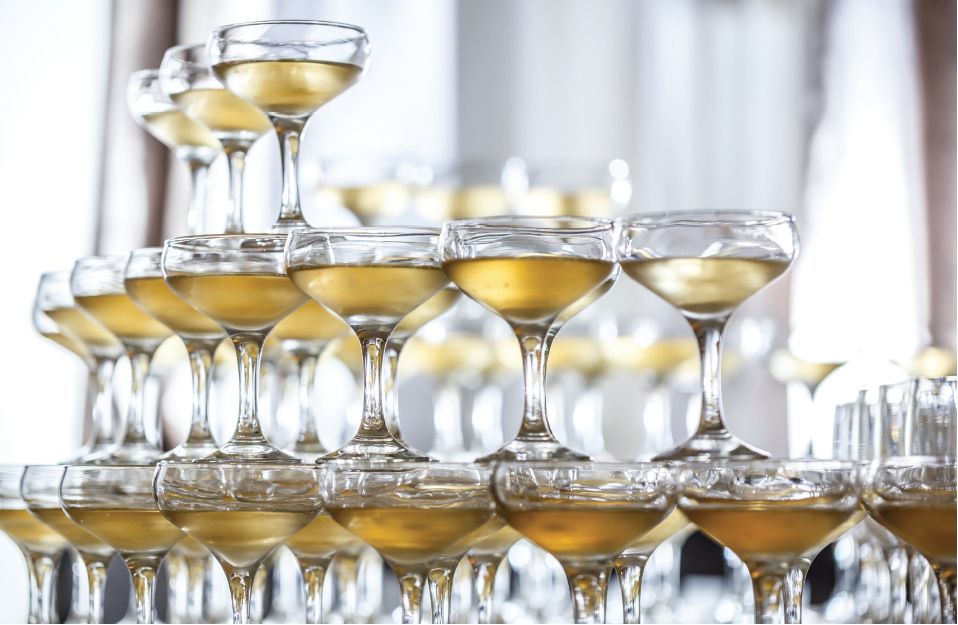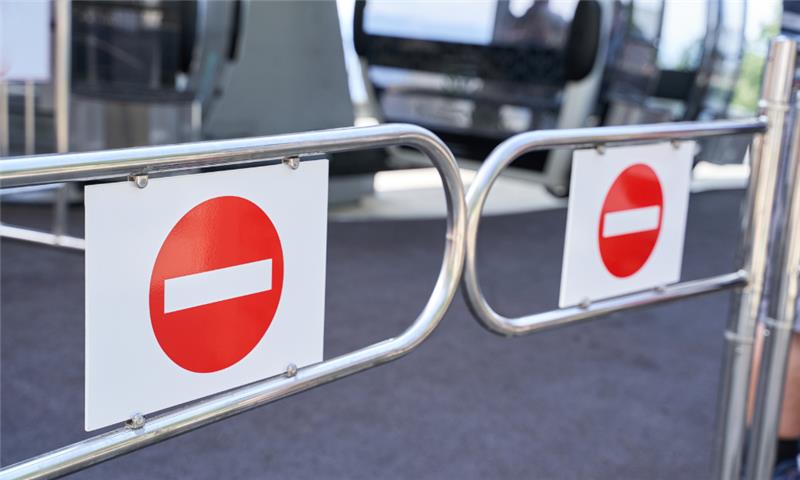OF ALL ALCOHOLIC BEVERAGES, champagne is certainly the most abused.
Think of all those victorious Formula One drivers shaking magnums of the stuff to shower the crowds around their victory podiums; or Stanley Cup winners and World Series celebrants who shampoo each other in their dressing rooms for all to see.
Then there is the tradition of smashing a bottle of champagne against the bow of a boat at its launching for good luck. (Someone must have forgotten to do that for the Titanic. No bottle was ever broken over her bow, and we all know how that story ended.)
Athletes and ladies who launch are not the only guilty ones when it comes to treating champagne badly. There are also those exhibitionists who delight in sabering champagne bottles in public.
This dangerous practice was started in the 18th century by Napoleon’s generals. After the heat of battle, they were understandably impatient to toast their victories. Bypassing the niceties of removing the foil and unwinding the wire muzzle that keeps the cork in place, the generals swept the blunt edge of their sabres along the contour of the bottle and off came the cork, still muzzled to the mouth of the bottle.
Why does this work without leaving shards of glass in the wine? When a steel blade slides up the bottle and strikes the lip, the shock waves, combined with the pressure in the bottle, cause the neck to fracture at its weakest point. The break is clean, and the pressure of the escaping gas ejects the cork that is still wired to the mouth of the bottle.
The entrapped gas in champagne creates a pressure of six atmospheres, or 90 pounds per square inch, which is the same pressure that is pumped into a bus tire. So, be warned: once you have loosened the wire cage of a champagne bottle you have a live grenade in your hand, with the pin pulled out.
While racing drivers and baseball players can be excused for such barbarism, it does little to explain the behaviour of the French, who actually make the world’s most elegant beverage?
In 1982, Robert Gourdin, Moët & Chandon’s North American sales director, held a press conference in Toronto’s King Edward Hotel to promote his company’s champagne. The invitation to the wine writers indicated that he would recreate Moët’s famous wine fountain using Baccarat crystal glasses — and he would also demonstrate the lost art of sabrage. (Yes, the French have a word for it.) Intrigued, a jaded press corps turned out in force. Including two TV news crews.
The event was held in the hotel’s ballroom, in the centre of which was a magnificent “fountain” standing about five feet high. It consisted of ascending circles of champagne coupe glasses standing on each other in the shape of a huge cone, with a single glass at the apex.
I had seen this fountain effect performed spectacularly in Reims a couple of years earlier. The idea is to pour champagne into the very top glass until it overflows into the tier below. You keep pouring until the cascading wine fills all the glasses down to the base. Then the fountain is dismantled glass by glass from the top and handed around to the assembled guests (all of whom get sticky fingers). It takes about three cases of champagne to replicate this event, if you’re thinking of trying it at your daughter’s wedding.
All would have gone well if Gourdin had stuck to the script and fed the thirsty journalists with champagne from the fountain, but he decided to he would demonstrate his prowess with the saber first. Showman that he was, Gourdin warned us to stand well back as he held the champagne bottle in one hand and waved a sabre in the other. The TV cameramen moved in to record the moment.
With a deft flick of the wrist, Gourdin slid the blade up the bottle. There was a small bang and the cork, still encased in an inch of glass, went flying across the room and — you guessed it — struck the Baccarat coupe fountain in the centre like a mortar shell, bringing the whole edifice down in a shower of broken crystal.
A CFTO-TV cameraman, who had just returned unscathed from a two-week assignment covering the war in Lebanon, was hit by a shard of glass and received a cut across his nose.
Robert Gourdin told me that he could sabre 24 bottles of champagne in five minutes, although he bore a scar from fourteen stitches on his right wrist as a testimony to the dangers of the enterprise. (The world record, incidentally, is 55 bottles in two minutes, performed on a line of Champagne Tendil & Lombardi bottles two years ago.)
Call me old-fashioned, but I prefer my champagne to be gentled into the glass.
Tony Aspler is the author of 17 books on wine, including his latest, Canadian Wineries.





